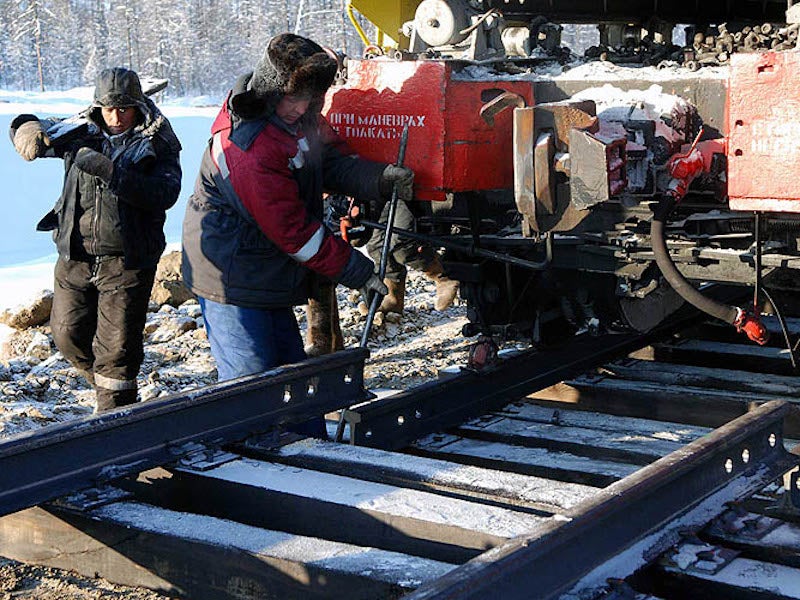The Elga coal complex located in south-eastern Yakutia is Russia’s biggest and one of the world’s biggest deposits of high-quality coking coal.
Owned and operated by Elgaugol, a subsidiary of the Russian mining and steel company Mechel Group, the open-cut coal mining complex commenced operations in August 2011.
Being developed in phases, the Elga coal complex produced more than 4.3 million tonnes (Mt) of coal in 2019. The planned annual production capacity of the mine is 11.7Mt while the lifespan of the project is estimated to be approximately 100 years.
The start of coal production at Elga coincided with the commissioning of the 321km-long Ulak-Elga railway, Russia’s first big-scale private railroad project for coal transportation that was built by Mechel between 2008 and 2011.
Mechel sold a 49% stake in the Elga coking coal project as well as in the Ulak-Elga railway to Gazprombank in June 2016.
A-Property, a company owned by Russian businessman Albert Avdolyan, agreed to buy the 49% stake in the coal project from Gazprombank in March 2020. It is also in talks to buy the remaining 51% in the project from Mechel.
Project location, geology, and reserves
The Elga coal mining project is located in the south-eastern region of the Sakha Republic (Yakutia), approximately 415 east of Neryungiri. The nearest port facility is at Vanino which is 1,900km by rail, while the Possiet Commercial Port in the Primorsky Territory is approximately 2,430km via rail.
The Elga deposit lies in the central Tokinsky coal-bearing region within the South Yakutian coal basin. The deposit contains high calorific value coal with low sulphur, nitrogen and phosphorus content.
The Elga coalfield comprises low-angle coal seams with thickness up to 17m and is estimated to hold approximately 2.2 billion tonnes of coal in proven and probable reserves.
Elga mining complex development
Mechel acquired the mining license for the Elga coalfield in 2007 and started constructing the Ulak-Elga rail link to connect the mine site with the Baikal-Amur Mainlines in 2008. The construction of the railway track involved a total of 80 bridges 350 hydraulic facilities.
Mining commenced in 2011, while the first batch of coking coal concentrates was produced with the construction of a seasonal washing plant in 2012. The annual coal production capacity was increased to 2.7Mt in November 2014.
The Elga open-pit mine produced its 15-millionth tonne of coal in 2018 as the expansion of mining and processing facilities continued at the site.
Mining operations at Elga open-pit
The Elga open-pit mining involves conventional drilling and blasting operations with the use of shovels and draglines for removing coal and waste.
The mining fleet comprises excavators, bulldozers, motor graders, dump trucks, fuel servicing trucks, and timber trucks.
A Komatsu WA-800 coal loader, two 12m3 Volvo loaders, an EKG-18 excavator, an Esh 20-90 S excavator, a 2m3 Liebherr excavator, three 130t BELAZ trucks were added to the mining fleet in 2018, while an ESH 20-90C waking dragline was added in June 2019.
The coal produced at the open-pit mine is processed at a nearby washing facility.
Infrastructure facilities
The Elga complex has a 220kV substation to receive power supply from Russia’s Unified Energy System. It was linked to the grid by the Federal Grid Company in September 2019. The coal complex also houses diesel-powered generators for a total generating capacity of 9MW.
A permanent housing complex for 3,000 personnel was constructed in November 2013. Two dormitories with 160 lodging accommodations were also opened in January 2019.
Coal off-take
China’s Jindong Cement and Japan’s Itochu Corporation are among the main international customers for the Elga coal output.
Contractors involved with the Elga coal project
Transstroy ZAO Engineering Corporation was appointed as the general contractor for the Ulak-Elga rail line project in March 2008.
POSCO A&C, an architectural service company and a subsidiary of South Korea-based POSCO, won the tender to design, construct and deliver the residential, public and amenity spaces for the Elga coal complex in May 2011.





